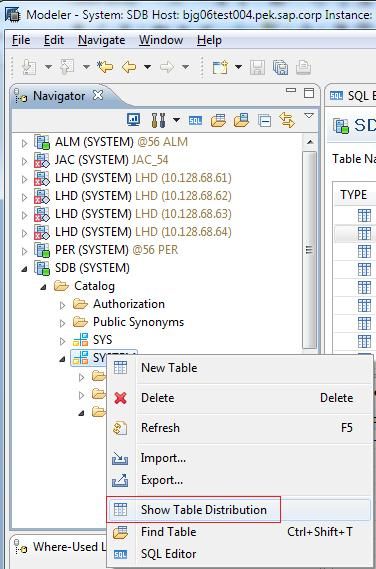- Table Partitioning In Hana Step By Step Steps
- Table Partitioning In Hana Step By Step Using
- Table Partitioning In Hana Step By Step Equations
- Sap Hana Table Partitioning Step By Step
- SAP HANA Admin Tutorial
The Universal Journal Entry table becomes the single source of truth and eliminate the need for most of reconciliation between FI and CO. Partitioning ACDOCA is must if the total number of records exceeds 2 billion. SAP best practice partition size recommendation is 300 to 500 million records. At first check if partitioning is needed at all which means check the tables with the most row entries. There is a limit per table/partition of 2 billion rows by the design of HANA. If your alerting is working correct you will receive an alert (ID 27). It looks like this: “Record count of column-store table partitions ( ID 27 ).
- SAP HANA Admin Useful Resources
- Selected Reading
Using Partitioning, you can split column store tables into smaller tables in a multiple host system. You can even divide tables into smaller more manageable parts using partitioning. Partitioning can be done using DML SQL statements.
When a table is partitioned it contains different set of rows for each part and Partitioning can be done based on different algorithms - Hash Partitioning, Single Level or multilevel Partitioning.
Following are the advantages of using Table Partitioning −
Partitioning Pruning
Table Partitioning In Hana Step By Step Steps
You can determine if a query can be analyzed in a particular partition. Using this method, you can reduce the load on the system and hence improve the response time.

Example − When you partition a table based on the year, a query is executed to analyze the data for a particular year. You can use specific partition and hence query performance is improved.
Load Balancing

You can divide individual partitions on multiple hosts and hence a query is not processed by a single server, results in better load balancing on all the servers hosting table partitions.
Size Limitation
Table Partitioning In Hana Step By Step Using
In a column store table, maximum number of rows that can be entered is around 2 billion. You can overcome this by distributing the rows of a column table on multiple partitions and hence the size limit is increased to 2 billion for each partition.
Improved Delta Merge Operation
During delta merge, if data is only modified for some partitions, you need to merge less partitions in delta merge.
Parallel Processing of Queries

Using partitions, you can run multiple queries in parallel and hence improve the response time.
Let us now discuss the types of partionining.
Single Level Partitioning
There are different types of single level partitioning available in SAP HANA system −
- Hash Partitioning
- Round Robin Partitioning
- Range Partitioning
In Hash partitioning, rows are distributed equally to perform load balancing. You don’t require the detailed information about table content in this Partitioning type.
As compared to Hash Partitioning, in Round Robin Partitioning rows are equally distributed to each partition and new rows are equally assigned to each partition.
To create 4 partitions of a table using Round Robin, you can use the following SQL queries. No primary keys should be defined.
This command will create 4 partitions of a table.
This will create 4 partitions on column a and b, and you need to specify at least one column.
Range Partitioning
In Range partitioning, you create dedicated partitions for certain values and you should have in-depth knowledge of table contents for partitioning columns.
Table Partitioning In Hana Step By Step Equations
Example − Creating one partition for each calendar month.
This will create 4 partitions, one for partition range 1 to 10, 2nd from 10 to 20, 3rd for value 50, and 4th for all other values.
Multilevel Partitioning
Sap Hana Table Partitioning Step By Step
In multilevel partitioning, you can overcome the limitation of HASH and RANGE single level partitioning to use key columns as partitioning columns. Using multilevel partitioning, you can partition a column that is not a primary key. The most common type of multilevel partitioning is HASH-Range Partitioning.

In Hash-Range multilevel partitioning, you implement Hash partitioning at the first level to implement load balancing and Range partitioning at the second level to implement timebased partitioning.
Instead of using Hash partitioning at the first level, you can also use Round Robin partitioning and it is known as Round Robin-Range multilevel partitioning.


